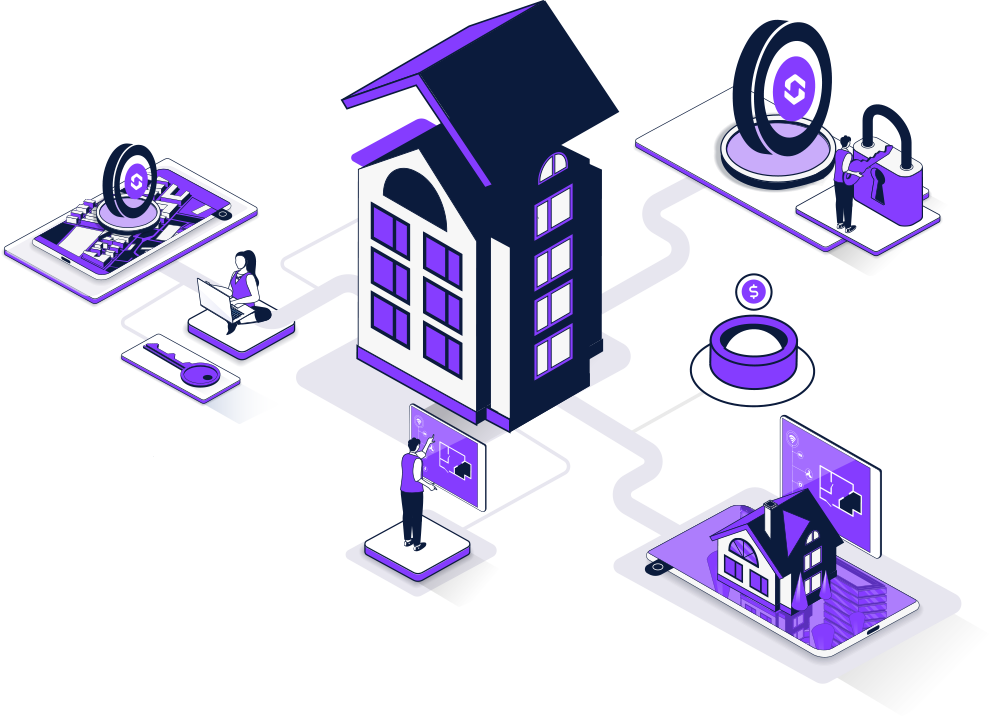The use of Blockchains has been increasing thanks to their high security and resistance to data alteration. This is why great entrepreneurs like Bill Gates and Elon Musk have joined the Blockchain world by investing large sums of money in digital assets.
*MERKLE TREE IMAGE*
https://github.com/akbng/merkle-tree
The vast majority of these networks are created under the Merkle Tree, which facilitates the verification of large amounts of data and its transmission, creating a fingerprint that relates each new datum to its associated initial root. This network was based on the concept of generating a distributed data structure, adaptability to different problems and greater control over the data.
Legal documents and certifications
To develop a Blockchain network, several legal aspects must be taken into account depending on the country in which the project is developed. Being a decentralized system, it does not have one specific jurisdiction; however, the United States has been a pioneer in regulating, together with the Securities and Exchange Commission (SEC), certain aspects that protect the consumer.
Since the American government does not govern the entire world, there are people to whom the laws of this country do not apply. Despite this, most networks and companies that trade in this technology choose to follow the regulations of the United States to avoid fraud and future inconveniences. It is necessary to follow certain protocols and legal regulations in order to have a legal structure that closes the gap between the “on-chain world” and the “off-chain world.”
On the other hand, within Blockchain, there are two data validation protocols:
Proof of Work (PoW) vs. Proof of Stake (PoS) and their differences
Within the network there is an initial programming defined in this Whitepaper, where the consensus protocols, the formation and storage of treasury, the reserve funds and liquidity funds are explained. This technical document clarifies what measures are implemented in the network that avoids internal alterations.
A part of machine learning is focused on discovering patterns in large amounts of data to classify them appropriately. There are two ways to reach a consensus on Blockchain to validate these blocks of transactions. The first way is with Proof of Work, which means participants compete for the right to validate the next block. This protocol uses large resources of energy and time, which are offset by work commissions. The second form is Proof of Stake, which is a mechanism that aims to improve the limitations of PoW. In PoS, there is no competition, but coins are “stacked”; the more coins a participant has for the longest time, the greater the probability that they will be chosen to validate the blocks and participate equally for the commission. This validation and data mining is executed to eliminate intermediaries outside the network, achieving the total decentralization of transactions and avoiding fraud.
Apart from this internal process, for a new user to be part of any Blockchain network, they must undergo an identity verification process called KYC/AML.
What is KYC/AML?
This is known as Know Your Customer and Anti Money-Laundering, and it is a control process that prevents fraud and selects users by identification, comparison and research in official databases. This process is simple and can be done for both natural and legal persons.
Security is essential for the continuous evolution that this technology has had in recent years. It is the responsibility of each company that is part of this network to confirm the identity of its users and maintain the security and trust of its operation within it. At BRET Real Estate Tokenization, we make sure to use the best networks for the creation of our tokens and enable a more transparent world in the real estate investment industry.
